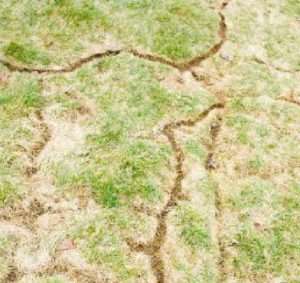Vole Lawn Damage Solutions: Effective Control Methods
Vole Lawn Damage Solutions: Effective Control Methods
Blog Article
Grasping Vole Bug Control: Comprehensive Insights on Problem Avoidance and Treatment Techniques
By recognizing the subtle indications of vole infestation early on, we can take proactive steps to avoid widespread damages. In this conversation, we will discover the nuances of vole behavior, dig into the recognition of invasion indications, and uncover the most reliable prevention and therapy methods.
Recognizing Vole Habits
Taking a look at the foraging patterns of voles supplies important understandings into their habits and environment preferences. By observing their foraging actions, researchers can get a better understanding of where voles choose to develop their environments and the extent of their ecological influence.
Research suggests that voles show selective feeding practices, liking roots, bulbs, and seeds. This dietary preference influences their foraging patterns, leading them to locations abundant in vegetation and ground cover. Furthermore, voles are understood to develop elaborate tunnel systems for foraging and nesting purposes, suggesting a high degree of flexibility to their surroundings.
Understanding vole habits is necessary for implementing targeted insect control steps that disrupt their habitat preferences and foraging tasks (vole control utah). By researching their habits, professionals can develop more reliable avoidance and treatment approaches to take care of vole invasions

Identifying Indicators of Vole Invasion
Vole invasions can be spotted by recognizing details indications of their existence in a location. Among the most usual signs of a vole problem is the existence of surface paths. Voles produce networks of narrow paths on the ground that are usually about 2 inches large. These runways are usually discovered in grassy locations or underneath mulch or ground cover where voles can relocate easily and look for food.
One more crucial sign of vole problem is the presence of little burrow openings in the ground. Voles dig superficial burrow systems with multiple entryways and leaves. These burrows act as sanctuary and nesting websites for the voles. Additionally, voles are understood to leave eaten plant stems, origins, and bulbs near their burrow openings, suggesting their feeding task in the location.
Discovering these droppings along runways or near burrow openings can verify a vole invasion. By being cautious for these indicators, residential or commercial property owners can promptly deal with vole infestations and avoid additional damage.
Implementing Proactive Prevention Measures

Additionally, employing all-natural vole deterrents like castor oil-based repellents or predator urine can work as efficient safety nets. It is likewise recommended to consistently check outdoor areas for any kind of signs of vole activity, such as paths or tunnel openings, to resolve prospective problems quickly. vole control. By embracing these aggressive prevention techniques, property owners can significantly decrease the chance of vole damage and keep the health and appearances of their landscapes
Effective Treatment Methods
Incorporating targeted trapping methods and utilizing authorized rodenticides are essential parts of reliable treatment techniques for managing vole invasions. Capturing can be an effective means to reduce vole populaces, specifically when placed tactically in their energetic runways. Break traps and live traps can both work, with the latter permitting the capture and moving of voles. When using rodenticides, it is essential to follow safety guidelines to avoid injury to non-target pets and family pets. Location rodenticides in protected bait stations to decrease threats to unexpected targets. Furthermore, habitat modification, such as reducing ground cover and removing resources of food, can help prevent voles from infesting an area. Regular surveillance and upkeep are also key facets of successful treatment approaches to make sure that vole populations are maintained under control. By incorporating trapping, rodenticides, environment adjustment, and consistent surveillance, efficient vole insect control can learn the facts here now be attained.
Surveillance and Maintenance Tips
Normal surveillance allows for the early discovery of vole task, making it possible for prompt intervention before invasions aggravate. To successfully check vole populaces, strategically placed traps can be used in vole runways or near burrow entryways.
In addition, keeping a well-kept and neat landscape is necessary in vole avoidance. Clearing away particles, such as heaps of timber or thick look at more info plants, removes prospective vole environments. Consistently trimming yards and cutting vegetation helps in reducing vole concealing areas and lessens their access to food sources.
Furthermore, recurring upkeep of physical barriers, such as fences or cord mesh, is essential to avoid vole invasion. Examining and repairing any kind of problems to these frameworks guarantees that vole control remains reliable in securing properties from problems. By integrating these monitoring and upkeep methods into a thorough vole bug control plan, people can successfully manage vole populaces and safeguard their properties from damages.
Conclusion
In verdict, grasping vole pest control needs a solid understanding of vole actions, the capability to identify indicators of infestation, applying aggressive prevention actions, effective therapy methods, and consistent tracking and upkeep. By taking a detailed approach to vole control, people can effectively handle and prevent invasions, ultimately securing their residential or commercial property and bordering environment from damage brought on by these little rats.
In this discussion, we will discover the nuances of vole behavior, delve into the identification of problem indicators, and discover the most effective avoidance and treatment methods.Integrating targeted capturing approaches and utilizing authorized rodenticides are crucial components of effective treatment methods for taking care of vole infestations. To effectively keep track of vole populations, tactically positioned catches can be made use of in vole paths or near burrow entries. Inspecting and repairing any damages to these structures ensures that vole control continues to be reliable in guarding you can look here residential or commercial properties from invasions. By integrating these tracking and maintenance practices into an extensive vole insect control plan, individuals can effectively manage vole populaces and shield their properties from damages.
Report this page